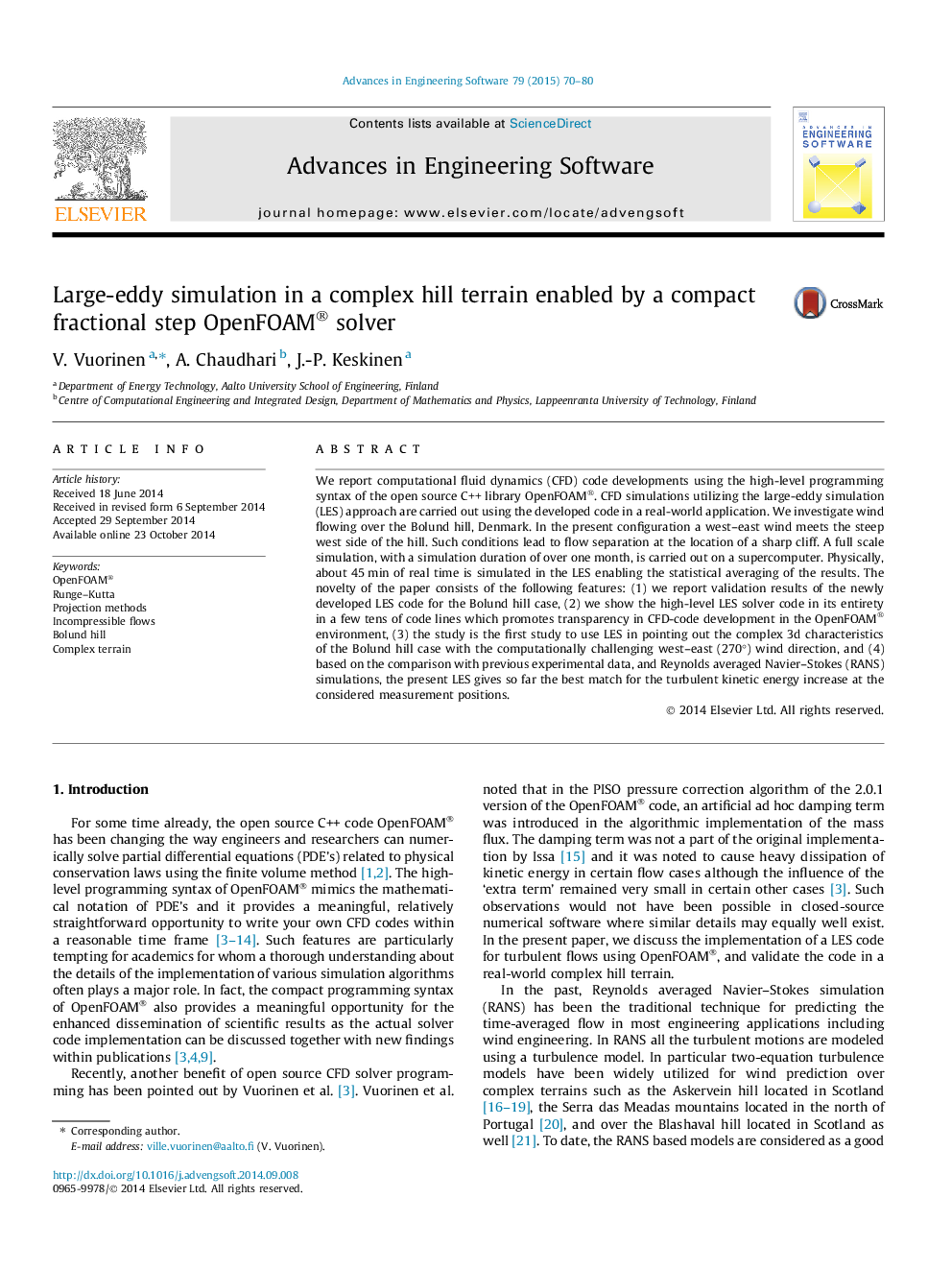| کد مقاله | کد نشریه | سال انتشار | مقاله انگلیسی | نسخه تمام متن |
|---|---|---|---|---|
| 567293 | 1452138 | 2015 | 11 صفحه PDF | دانلود رایگان |

• More transparency to CFD softwares gained via high-level open source developments.
• A generic ‘recipe’ provided for implementation of a new LES solver in OpenFOAM.
• Wall function implementation with environmental focus discussed.
• LES code validation for a challenging flow case over complex hill terrain.
• LES shows good agreement with reference data.
We report computational fluid dynamics (CFD) code developments using the high-level programming syntax of the open source C++ library OpenFOAM®. CFD simulations utilizing the large-eddy simulation (LES) approach are carried out using the developed code in a real-world application. We investigate wind flowing over the Bolund hill, Denmark. In the present configuration a west–east wind meets the steep west side of the hill. Such conditions lead to flow separation at the location of a sharp cliff. A full scale simulation, with a simulation duration of over one month, is carried out on a supercomputer. Physically, about 45 min of real time is simulated in the LES enabling the statistical averaging of the results. The novelty of the paper consists of the following features: (1) we report validation results of the newly developed LES code for the Bolund hill case, (2) we show the high-level LES solver code in its entirety in a few tens of code lines which promotes transparency in CFD-code development in the OpenFOAM® environment, (3) the study is the first study to use LES in pointing out the complex 3d characteristics of the Bolund hill case with the computationally challenging west–east (270°) wind direction, and (4) based on the comparison with previous experimental data, and Reynolds averaged Navier–Stokes (RANS) simulations, the present LES gives so far the best match for the turbulent kinetic energy increase at the considered measurement positions.
Journal: Advances in Engineering Software - Volume 79, January 2015, Pages 70–80